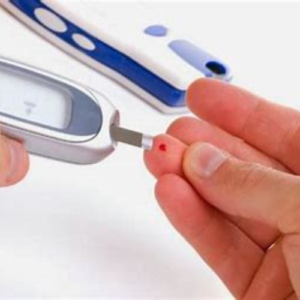Introduction

Exercise plays a pivotal role in regulating blood sugar levels, offering a natural and effective means of managing diabetes and promoting overall health. Understanding how exercise affects blood sugar and implementing appropriate physical activity routines can significantly enhance your well-being.
Exercise Blood Sugar: Exploring the Connection
Physical activity has a profound impact on blood sugar levels, primarily by enhancing insulin sensitivity and facilitating glucose uptake by muscles. When you exercise, your muscles require additional energy, leading to increased glucose utilization. As a result, blood sugar levels decrease during and after exercise, especially with regular physical activity.
Exercise Blood Sugar: Types of Physical Activity
Different forms of exercise exert varying effects on blood sugar levels. Both aerobic exercise, such as walking, cycling, and swimming, and resistance training, including weightlifting and bodyweight exercises, offer unique benefits for blood sugar management. Incorporating a combination of aerobic and resistance exercises into your routine can optimize blood sugar control.
Exercise Blood Sugar: Maximizing Benefits
To reap the maximum benefits of exercise for blood sugar control:
- Stay Consistent: Establish a regular exercise routine and aim for at least 150 minutes of moderate-intensity aerobic activity per week.
- Monitor Blood Sugar: Check your blood sugar levels before, during, and after exercise to gauge its impact and make necessary adjustments.
- Hydrate Adequately: Drink plenty of water before, during, and after exercise to stay hydrated and support optimal blood sugar regulation.
- Include Variety: Incorporate a mix of aerobic, resistance, and flexibility exercises to promote overall health and well-being.
Exercise Blood Sugar: FAQs
Q.How does exercise affect blood sugar levels?
Exercise promotes glucose uptake by muscles, leading to a temporary decrease in blood sugar levels during and after physical activity.
Q.When is the best time to exercise for blood sugar control?
While any time is beneficial, exercising after meals can help lower postprandial blood sugar levels by enhancing insulin sensitivity.
Q.Can exercise help prevent diabetes?
Yes, regular physical activity plays a crucial role in diabetes prevention by improving insulin sensitivity and promoting weight management.
Q.What are the potential risks of exercise for individuals with diabetes?
Exercise-related risks include hypoglycemia (low blood sugar) and hyperglycemia (high blood sugar), which can occur if insulin doses or carbohydrate intake are not appropriately adjusted.
Q.How should individuals with diabetes adjust their exercise routine?
It’s essential to monitor blood sugar levels before, during, and after exercise and adjust insulin doses or carbohydrate intake accordingly to prevent fluctuations.
Q.Is it safe to exercise with high blood sugar levels?
Exercise can help lower high blood sugar levels, but it’s crucial to avoid vigorous activity if ketones are present in the urine, as this may indicate diabetic ketoacidosis, a severe complication.
Conclusion
Exercise is a powerful tool for managing blood sugar levels and improving overall health for individuals with diabetes. By understanding the relationship between exercise and blood sugar control and implementing appropriate strategies, you can effectively manage your condition and lead a healthier, more active lifestyle.

